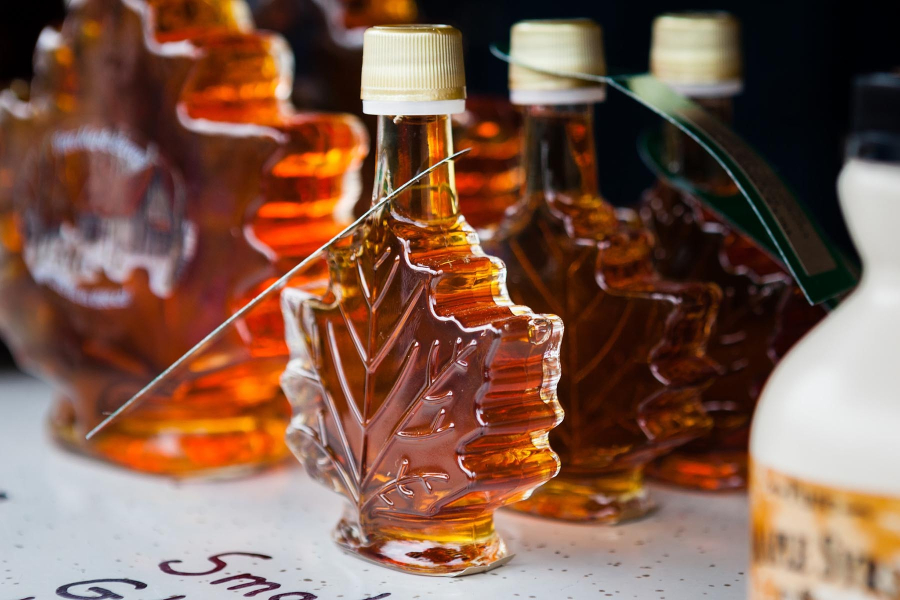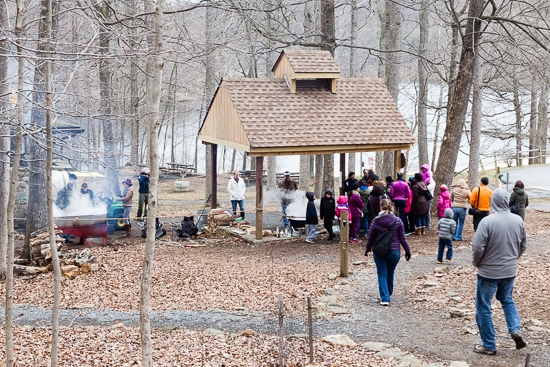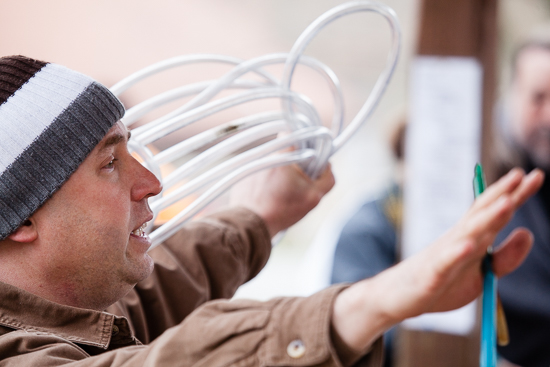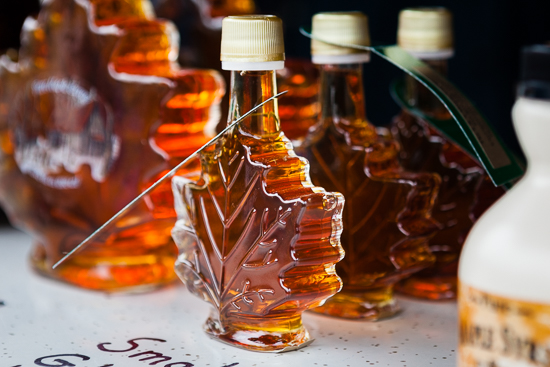Maple syrup may face not-so-sweet future in Bay region
Changing climate could impact habitat, health of sugar maples


It’s a cold, overcast day in Mid-March, and dozens of onlookers are huddled around a wooden shelter, watching steam billow off the top of a cast-iron pot. The gathering is part of the 46th Annual Maple Syrup Festival, held at Maryland’s Cunningham Falls State Park, and a curious audience is listening to Maryland Park Ranger Jeremiah Corbin describe how the sweet sap produced by sugar maple trees is boiled into pure maple syrup.
Each year, volunteers and attendees at the festival celebrate all things maple syrup. Visitors can partake in a pancake breakfast, sample maple candies and creams, and watch a demonstration of the syrup-making process, from techniques used hundreds of years ago to current tree-tapping technologies.

When it comes to maple syrup production, Maryland isn’t first on the list—in fact, the state ranks near the bottom of U.S. syrup production (Vermont, of course, is number one). Of the Chesapeake Bay watershed’s six states, New York ranks highest, accounting for more than 15 percent of U.S. production. Pennsylvania typically accounts for around five percent, while Maryland, Virginia and West Virginia may produce a few thousand gallons of maple syrup a year. But much of the region falls along the southern edge of maple syrup production, meaning these may be some of the first areas to experience how a changing climate affects this cultural and economic tradition.
Late-winter temperatures—warm, sunny days followed by cool nights—are crucial to start the flow of the sugar maple’s watery, slightly-sweet sap. But temperatures across the globe have been steadily rising, with 2015 the warmest year on record, and these warmer temperatures could affect the habitat and health of trees like the sugar maple.

As temperatures warm, certain areas may no longer be suitable habitat for tree species that are common today, including the sugar maple. The Maryland Climate Action Plan suggests maple-beech-birch forests are likely to fade northward and be replaced by species currently found south of the state. Even low-range predictions from the U.S. Forest Service’s Climate Change Atlas suggest suitable habitat for sugar maples will retreat to the northern reaches of the watershed over the next 100 years.
According to scientists with the Acer Climate and Socio-Ecological Research Network, or ACERnet, the potential effects of climate change on maple syrup production could include not only the amount of trees available to tap, but also the health of those trees, the tapping season and the quality of sap. If suitable sugar maple habitat shifts northward, climate-stressed trees left in the area may become more susceptible to threats like pests and disease. And although syrup producers have already seen tapping seasons starting earlier and becoming more unpredictable, more research is needed on whether climate change will affect the sweetness of the sap.

Still, there’s no need to bid farewell to locally-made syrup just yet. By adapting to a changing tapping season, producers in northern states may be able to continue collecting sap. And advanced technologies like vacuum tubing systems may help those in southern ranges continue production, at least for a little while. Either way, the maple syrup festivals of the next century may look quite different from the ones we’re used to today.
To view more photos, visit the Chesapeake Bay Program’s Flickr page.
Text by Stephanie Smith
Images and captions by Will Parson

Comments
Great article! Thank you guys for consistently teaching me something new about the Chesapeake Bay! It's such a dynamic ecosystem and I love how dedicated your team is to keeping us up to date on all the happenings in the region. Keep up the good work.
Thank you!
Your comment has been received. Before it can be published, the comment will be reviewed by our team to ensure it adheres with our rules of engagement.
Back to recent stories